Text
Great post. Have you ever supported an online cause and if so which ones?
#4 - Activism and Protest
As digital citizens, we are now part of a global community that shares stories, photos, news and our opinions. It is only natural then, that our use of social media would also afford us to protest, demonstrate and participate in movements or activism that we believe in. More recently, social media platforms have been used to organise and rally individuals around causes that enable activism and protest to become global awareness campaigns that really start to effect change, such as the #metoo tag created in 2017 in support of women that wish to speak out against sexual assault. Defined as hashtag activism, this is a new concept in which people are able to connect and support a campaign online, similar to how they would have joined a protest or demonstration in person, their social media network now becomes the venue for their activism (Youmans & York 2012).
Our use of social media in moments of activism and protest has also created a concept known as citizen journalism, whereby individuals, through the use of their social media activities, create and distribute the content from events that are subsequently used by traditional media outlets (Aday, et al 2012). The most notable example of this is during the Arab Spring, when individuals in Egypt were protesting, they recorded their demonstrations and the response from the Government on their mobile phones and then posted them on their social networks, creating a global awareness of the situation and in turn, becoming “journalists” for the world (Idle 2011). The result of this citizen journalism was significant, with governments falling and the confidence of the population to effect change increasing, resulting in further demonstrations across the Middle East and North Africa, hence the label, the Arab Spring (Shearlaw 2016).

Another form of activism is known as culture jamming, which is a resistance to popular culture through alternative media (Lieyrouw 2011). Whilst social media didn’t create culture jamming, it has enabled the concept of culture jamming to become relevant again by using the medium of social media to critique some of the hegemony that exists throughout society. Culture jamming is a creative approach to demonstrating against the mainstream culture by using performance art, graffiti and adbusting. Powerful examples of culture jamming are evident in the “anti-tobacco” adverts depicted on Adbusters.org (2018) whereby tobacco companies gave testimony that tobacco was not addictive, yet tobacco use is associated with over 5 million premature deaths per year (Hatsukami, et al 2008). The adverts depicted on Adbusters use a familiar tobacco brand, Camel, to communicate alternative views of what was a global advertising campaign, using the alternative brand moniker “Joe Chemo”, with an obvious reference to the chemotherapy that cancer patients endure and a juxtaposition on the Joe Camel advertising campaign that was created in 1987 (Calfee 2000).

References
Adbusters 2018, Tobacco, Adbusters, viewed 12 May 2018, <http://adbusters.org/spoofads/tobacco/>.
Aday, S, Farrell, H, Lynch, M, Sides, J, & Freelon, D 2012, ‘Blogs and Bullets II: New Media and Conflict after the Arab Spring’, Peaceworks, United States Institute of Peace, no. 80
Calfee, JE 2000, ‘The historical significance of joe camel’, Journal of Public Policy & Marketing, vol. 19, no.2, pp. 168-182
Dalsh, AA 2011, ‘Cairo’s Tahrir Square listens to President Hosni Mubarak address the nation on 10 February 2011′ [image], viewed 13 May 2018, <https://www.theguardian.com/world/2016/jan/25/egypt-5-years-on-was-it-ever-a-social-media-revolution>.
Hatsukami, DK, Stead, LF, Gupta, PC 2008, ‘Tobacco addiction’, The Lancet, vol. 371, no. 9629
Idle, N 2011, Tweets from Tahrir : Egypt’s Revolution As It Unfolded, In the Words of the People Who Made It, OR Books, New York.
Lieyrouw, L 2011, Alternative and Activist New Media, Polity Books, p. 134
Shearlaw, M 2016, Egypt five years on: was it ever a ‘social media revolution’?, The Guardian, viewed 12 May 2018, <https://www.theguardian.com/world/2016/jan/25/egypt-5-years-on-was-it-ever-a-social-media-revolution>.
Youmans, W, & York, J 2012, 'Social Media and the Activist Toolkit: User Agreements, Corporate Interests, and the Information Infrastructure of Modern Social Movements’, Journal Of Communication, vol. 62, no. 2, pp. 315-329
3 notes
·
View notes
Text
Really interesting post and got me thinking that yes, there are more platforms available now and they providing the perfect Segway for internet trolls. The other interesting thing nowadays is the use of an emoji as a form of communication. I have heard of people getting sent lines of emoji’s telling them to harm themselves. When did cartoon images become the weapon of choice for todays teens?
Trolling & Social Media Conflict
Bullying has been around for hundreds of years, with the introduction of technology brings social media and the newest platform where trolling occurs. A social media troll, by definition, is someone who creates conflict on sites like Twitter, Facebook and Reddit by posting messages that are particularly controversial or inflammatory with the sole intent of provoking an emotional response from other users (Huffington Post, 2017). People posting personal information about themselves online and others manipulate this information to portray someone leaving the person vulnerable. Vulnerability is defined as ‘uncertainty, risk and emotional exposure’ (Taylor, 2016). Bullying Zero Australia 2017 reports that teenage girls are most vulnerable to trolling online.
Trolling online can result in lifestyle problems for the victims such as
*Disconnection to peers
*Low academic achievements
*Low self esteem
*Increase of depression and substance use
*Higher indication of vulnerability leading to further bullying
*In extreme cases, suicidal behaviour and thoughts. (Victorian State Government,2017)
Whilst I was going through my teen years social media was only being introduced. In fact Myspace was most common to have whilst I used to sneak on the old dial up internet to have a chat with my friends on MSN Messenger. Looking back I don’t recall social media trolling, there was a lot less platforms to join to meaning less opinions expressed and less objections to other opinions which reduces trolling, similar to when a city gets larger so does the crime.

Trolling is unavoidable and not everyone gets along civil there is always someone who speaks their mind.It can be anonymous, direct, indirect and sometimes accidental.

Whilst there is law in place under the Criminal Code Act 1995 (Cth) it is an offence to use the Internet, social media or a telephone to menace, harass or cause offence. The maximum penalty for this offence is three years imprisonment or a fine of more than $30,000 (Australian Cybercrime Online Reporting Network, 2018). Whilst there are anonymous ways to post could the law be avoided due to this? Or is there the ability to trace this anonymous troll? I think all social media platforms should have a profile created and confirmed. But will that stop the nasty trolls from creating ‘fake profiles’?
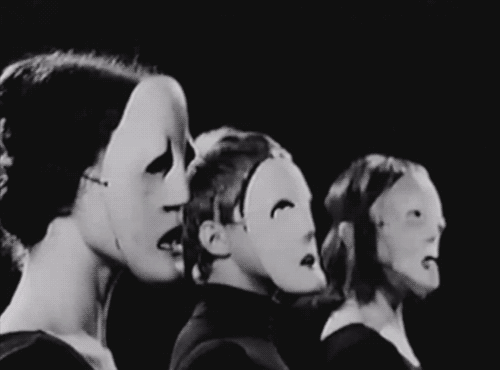
Fuller (2014) makes a suggestion - should all social media platforms make all user under 16 have parental approval to have a social media account. Which leads me to the question, do you think this is appropriate? I’m not a parent however I fear for my future children and their social media experiences. I feel this could help limit teens creating accounts with parental knowledge but however what would stop teens from forging their parents approval?
Anon 2018, “Troll Stock Illustrations. 2,405 Troll clip art images and royalty free illustrations available to search from thousands of EPS vector clipart and stock art producers.”, Canstockphoto.com.au, viewed 30 April, 2018, <https://www.canstockphoto.com.au/illustration/troll.html>.
Australian Cybercrime Reporting Network, 2018, Cyberbulling, Australian Cybercrime Reporting Network, viewed 20th April 2018
https://www.acorn.gov.au/learn-about-cybercrime/cyber-bullying
Fuller, G 2014, “‘Cyber-safety’: what are we actually talking about?”, The Conversation, viewed 28 April, 2018, <https://theconversation.com/cyber-safety-what-are-we-actually-talking-about-23505>.
The Huffington Post. (2017). Answering a Social Troll - What You Need to Know. [online] viewed 20 April 2018, http://www.huffingtonpost.com/andre-bourque/answering-a-social-troll_b_6625654.html
Taylor, J 2016, Vulnerability Is, Habits For Wellbeing, viewed April 22 2018
State Government of Victoria, 2017, The Impact of Bullying, Department of Education, viewed 24 April, 2018, .
http://www.education.vic.gov.au/about/programs/bullystoppers/Pages/impact.aspx
4 notes
·
View notes
Text
Really liked this post. Agree that whilst technology is important, human input also contributes greatly to the system as not all technology can understand and interpret data adequately.
#6 - Crowdsourcing in times of crisis
Crowdsourcing is a concept then enables a large group of people to contribute to an idea or cause (Hoßfeld et al., 2013). There are many examples of crowdsourcing, including branding and marketing ideas, such as the campaign by Nissan that allowed the public to name a vehicle, through to product development, such as the Facebook app that Citroen developed that enabled the public to input on key design aspects of a new car (Moth 2013). Other examples of crowdsourcing include solving scientific problems, such as the British Parliament and NASA have done (Dahlander & Piezunka 2017) and even creating television shows, such as Amazon Studios that enables individuals from around the world to submit their ideas for production (Barr 2010).
Crisis situations have also used crowdsourcing effectively, by harnessing the power of the wider population combined with technology such as social media to help report and disseminate information in real-time, such as the recent Queensland floods. The use of Twitter during the Queensland floods resulted in over 35,000 tweets that became a main source of information from the community, but was also supported by mainstream media and emergency services, creating a central, coordinating voice during the crisis (Bruns et al., 2012). This shows that crowdsourcing and social media can be used for positive outcomes in times of a crisis. Conversely, crowdsourcing and social media can be used to spread misinformation and it is important to ensure the information posted is verified, particularly in cases of political and humanitarian crisis, such as the Democratic Republic of Congo crisis of 2008 (Ford 2012).
Ushahidi is an example of the technology platforms that enable crowdsourcing of information to be easily created, including important features such as verification by other users of a report and also the ability to geographically map responses from the community to a live map, giving people the ability to easily visualise where the activity is occurring, known as social mapping (Gao, Barbier & Goolsby 2011). An example of the combination of crowdsourcing, social media and social mapping is evidenced through the use of Ushahidi during the Haiti earthquake in 2010, whereby the platform was used by the community to post information regarding individuals and also for emergency services to provide updates to the community (Ushahidi 2012).

Crowdsourcing and social media are certainly advantageous in many scenarios to invoke the power of the population through the use of technology and this holds true in times of crisis as well. The important factor in times of crisis, is to ensure the information is true and correct, as the affordance of the technology means that many people are relying on the information to respond to the situation.
References:
Barr, A 2010, ‘Crowdsourcing goes to Hollywood as Amazon makes movies’, Reuters, 10 October, viewed 26 May 2018, <https://www.reuters.com/article/us-amazon-hollywood-crowd-idUSBRE8990JH20121010>.
Bruns, A, Burgess, J, Crawford, K & Shaw, F 2012, #qldfloods and @QPSMedia: Crisis Communication on Twitter in the 2011 South East Queensland Floods, ARC Centre of Excellence for Creative Industries and Innovation, Brisbane.
Dahlander, L & Piezunka, H 2017, ‘Why Some Crowdsourcing Efforts Work and Others Don’t’, Harvard Business Review, 21 January, viewed 26 May 2018, <https://hbr.org/2017/02/why-some-crowdsourcing-efforts-work-and-others-dont>.
Ford, H 2012, ‘Crowd Wisdom’, Index on Censorship, vol. 41, no. 4, pp. 33-39.
Gao, H, Barbier, R & Goolsby, R 2011, ‘Harnessing the crowdsourcing power of social media for disaster relief’, IEEE Intelligent Systems, vol. 26, no. 3, pp. 10-14.
Hoßfeld, T, Tran-Gia, P & Vukovic, M 2013, ‘Crowdsourcing: From Theory to Practice and Long-Term Perspectives’, Dagstuhl Reports, vol. 3, no. 9, pp.1–33.
Meier, P 2012, ‘The Ushahidi Hait Map in the first 24 hours after the earthquake.’ [image], How Crisis Mapping Saved Lives in Haiti, National Geographic, viewed 26 May 2018, <https://blog.nationalgeographic.org/2012/07/02/how-crisis-mapping-saved-lives-in-haiti/>.
Moth, D 2013, ‘Eight brands that crowdsourced marketing and product ideas’, eConsultancy.com, 11 April, viewed 26 May 2018, <https://econsultancy.com/blog/62504-eight-brands-that-crowdsourced-marketing-and-product-ideas>.
Ushahidi 2012, ‘Haiti and the Power of Crowdsourcing’, Ushahidi, 12 January, viewed 26 May 2018, < https://www.ushahidi.com/blog/2012/01/12/haiti-and-the-power-of-crowdsourcing>.
8 notes
·
View notes
Text
Great Post. The evolution of #BlackLivesMatter has become an internet phenomenon but I wonder how it can really change attitudes when kids are exposed to racial slander in rap songs by high profile rappers? I think sadly....we have a long way to go.
Post 4: #DigitalActivism
Social media is an integral aspect of activism in the 21st century. Unlike traditional methods of activism, digital activism utilises the media as an instrument to voice their views. According to Lievrouw (2011) social media plays as an inexpensive, easily accessible and powerful tool for activists to express and interact. Advanced media tools allow activists and “digital citizens” to gain visibility, a voice, confront opposing views and combat the barriers involved in taking part in wider debates (Swinburne Online 2018). Local forms of digital activism include campaigns like Greenpeace, GetUp! and Change.org which use social media platform to raise money for their campaigns and spread their message. On a more international level, Wael Ghonim is an Egyptian activist who orchestrated the infamous “We are All Khaled Said” via a Facebook page (Youmans & York 2012). Social media played as a crucial role in uniting Egyptian citizens through Facebook to combat oppositional Egyptian politics.
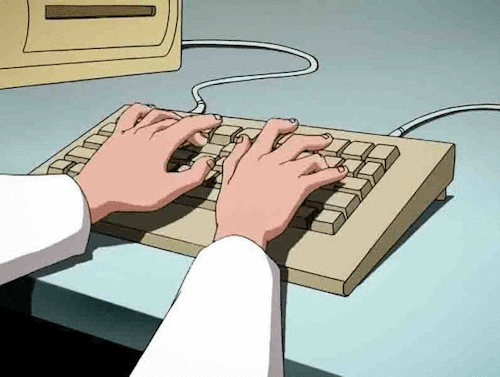
In this weeks learning material, Gerbaudo (2012) discussed the usefulness of social media as a form of contemporary activism. Gerbaudo (2012) highlights that social media is not only a means of voicing ones opinion but also sets the brief for how people should interact with one another through collective action.
Popular example
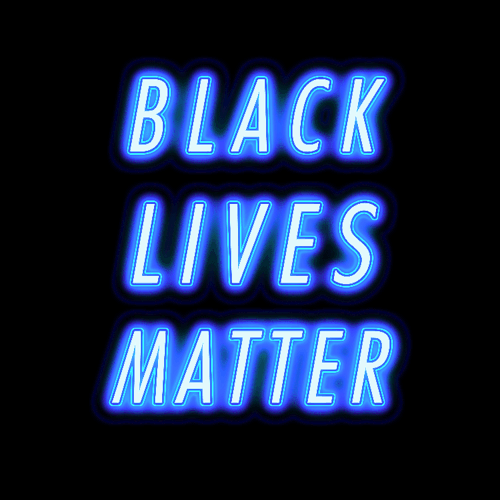
More recently, another major movement which has taken social media by a storm is the #BlackLivesMatter movement. Carney (2016) highlights the new role of social media as a platform which allows for discussions on race and police violence. The #BlackLivesMatter movement emerged after the tragic death of 15 year old Trayvon Martin in Florida, which brought attention to the unjust killings of black men in America (Carney 2016). The Black Lives Matter movement aims to address the systematic and intentional targeting of black people (Carney 2016). Likewise, the movement aims to address the lack of accountability for police officers responsible for these killings (Carney 2016).
References:
Carney, N 2016, ‘All Lives Matter, but so Does Race: Black Lives Matter and the Evolving Role of Social media’, Humanity & Society, vol. 40, no. 2, pp. 180-199.
Gerbaudo, P 2012, Tweets and the Streets : Social Media and Contemporary Activism, Pluto, London.
Lievrouw, L 2011, Alternative & Activist New Media, Polity, Cambridge, U.K, p. 2.
1 note
·
View note
Text
Love it! “Yes, slacktivism might be the “lazy” approach to activism but isn’t it better than doing nothing at all?” - Give that we are a “time poor” culture now I think sometimes the only way we ‘can’ show our support (instead of attending rallies on the step of parliament house) is to simply click a button, repost or share. To me it definitely is better than doing nothing! Great Post :)
Activism and protest
If someone had come up to me 10 years ago and mentioned the word activist, the first thing that would have popped into my mind would be the image of an angry protestor holding a sign or a celebrity donating their riches to charity. However, as the digital landscape has evolved, so has the way we interact with the world around us and the way we can contribute to society. This digital shift has helped to “mobilise thousands of new supporters to a diverse range of causes” (Karatzogianni, 2016) and make activism something that’s accessible to all.

As digital citizens, we all play a very small part in a very large ecosystem of people, ideas, patterns and beliefs. In any community, whether it be digital or not, people who hold similar views and values are often drawn together so it makes sense for people that are passionate about the same thing to join forces online. As Bakardjieva et.al suggest, “nowadays, when citizens, activists and participants in social movements want to voice their views and define their political identities they increasingly do so in hybrid media environments”. Technology allows us to involve ourselves in things that might be happening on the opposite side of the world or things we would usually only hear about on the news and enables us to contribute to a wider variety of causes. However much of the criticism towards online activism focuses around “activists” being lazy and condemns users for not doing enough to actually solve any issues.
In his article Activism vs. Slacktivism, Dennis McCafferty defines slacktivists as “people who are happy to click a like button about a cause and may make other nominal, supportive gestures” but aren’t inspired to go out of their way to make a difference.
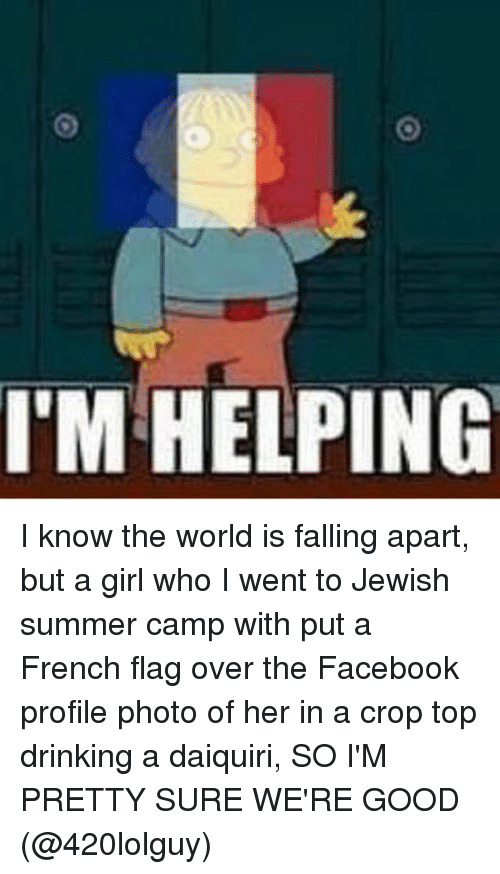
Slacktivism is definitely alive and thriving and it has become much easier for people to feel like they’re involved in a cause with the click of a button. Despite this, social media can be a powerful and important tool to support and promote activism in the digital age, and much of this criticism focuses too heavily on social media use on its own.
Just because there is a lower level of participation or interaction with a cause, this doesn’t mean that these small actions can’t have an impact or lead to widespread change. Social media in itself cant be held accountable for entire campaigns or movements, however it is a vital part of almost all current-day activism and is a valuable channel to support and promote causes in the digital age. It allows people to voice their views and define their political identities (Barkardjieva et.al., 2012) as well as being able to facilitate things such as rallies and protests on Facebook events to gain a wider audience outreach. Each small act of “slacktivism” helps raise awareness and may bring something to the attention of someone who is able to make a real difference.
Yes, slacktivism might be the “lazy” approach to activism but isn’t it better than doing nothing at all?
REFERENCES
Bakardjieva, M 2009, ‘Subactivism: Lifeworld and Politics in the Age of the Internet’, Information Society, retrieved from http://web.b.ebscohost.com.ezproxy.lib.swin.edu.au/ehost/detail/detail?vid=2&sid=bfad6349-ac30-4fa1-a575-069933155f86%40sessionmgr101&bdata=JnNpdGU9ZWhvc3QtbGl2ZSZzY29wZT1zaXRl#AN=36801133&db=a9h
Bakardjieva, M, Svensson, J & Skoric, M (2012) Digital Citizenship and Activism: Questions of Power and Participation Online in The eJournal of eDemocracy and Open Government, CC Creative Commons Licence, retrieved from http://people.ucalgary.ca/~bakardji/files/pubs/journals/JeDEM_Editorial.pdf
Budish, RH (2012) 'CLICK TO CHANGE: OPTIMISM DESPITE ONLINE ACTIVISM’S UNMET EXPECTATIONS’, Emory International Law Review, vol. 26, no. 2, Retrieved from http://web.a.ebscohost.com.ezproxy.lib.swin.edu.au/ehost/pdfviewer/pdfviewer?vid=1&sid=516bc32b-ac5a-4b57-8b44-200e1eb2e07d%40sessionmgr4010
Karatzogianni, A (2016) Beyond hashtags: how a new wave of digital activists is changing society from The Conversation, University of Leicester, UK retrieved from https://theconversation.com/beyond-hashtags-how-a-new-wave-of-digital-activists-is-changing-society-57502
McCafferty, D (2011) Activism vs. Slacktivism in Communications of the ACM, Vol. 54 Issue 12, retrieved from http://web.a.ebscohost.com.ezproxy.lib.swin.edu.au/ehost/detail/detail?vid=0&sid=9e89532e-3109-4735-8ca0-c97b7595e6af%40sessionmgr4010&bdata=JnNpdGU9ZWhvc3QtbGl2ZSZzY29wZT1zaXRl#AN=69924567&db=iih
IMAGES
https://onsizzle.com/t/french-flag?since=1477386000%2C3136782
http://the-generation.net/the-slacktivism-of-generation-a-new-era-of-human-rights-activism/
5 notes
·
View notes
Text
Really interesting perspective! Loved the insight. I have never been exposed to an online troll but I know people who have. The devastation they leave in their wake is dreadful. #saynotocyberbullies
Trolling or Cyber-bullying?
The internet and social media in all its glory has revolutionized the way in which we share and obtain information, connect, communicate and do business with one another. And whilst the majority of user experiences have been positive, like with anything, there have also been some negatives.
Enter the Internet Troll.

Trolling is defined in Urban Dictionary (2014) as the deliberate act (by a Troll), of making random unsolicited and / or controversial comments on various internet forums with the intent to provoke an emotional knee jerk reaction from unsuspecting readers to engage in a fight or argument.
Exhibit A:

There is a fair amount of stereotype around the appearance and characteristics of an internet troll.
Exhibit B:

Disclaimer: the above picture is not a true representation of an internet troll, anyone can be an internet troll regardless of gender*, race or sexual preference. (*Trolls dramatically skew male (Gunaratna 2017)).
Researchers at Australian’s Federation University conducted a study on individuals who participated in online trolling to investigate their psychological profile in terms of psychopathy, sadism and empathy. The study found that trolls tend to show higher levels of the traits psychopathy and sadism, as well as lower levels of affective empathy (Gunaratna 2017).
So, is trolling a form of cyber-bullying?
Most people would argue yes. There are some distinctions between the two but there are also some slight differences. Cyber-bullying first came about with the emergence of social media in the early 2000’s (Nicol 2012); however, it is not purely an online issue, bullies have been around for years, they just have another avenue in which to conduct their bullying. Cyber-bullies use technology to deliberately and repeatedly cause harm and destress (Nicol 2012). Cyber-bullies typically know the person they are bullying whereas trolls usually remain anonymous or have no clear relationship with the recipient, however both are conducted in an online setting.
And what can be done about it?
Consensus is (in both instances) to not engage with either an internet troll or a cyber-bully. The rise of internet trolls has bought about the term “don’t feed the trolls” as a warning to fellow internet users as reacting to a troll’s comment/s is the satisfaction they are looking for.
Exhibit C:

Cyber-bullies however, typically require more action to get rid of and usually with the aid of others. Most recommendations involve ignoring the bully, blocking the bully, turning off social media or reporting the bullying to a parent (or guardian) or in some instances a teacher. Sadly though, it’s not always that easy nor does it always guarantee the bully will stop. It is vital that families, schools and communities work together to create a culture in which bullying‐like behaviours are not tolerated (ThinkUKnow).
References
Gunaratna. S (2017). CBS News. Peering into the Psychology of Online Trolls. Accessed at: https://www.cbsnews.com/news/psychological-profile-of-online-trolls/
Martin. B. 2014. Deviant Art (online). Internet Troll (Photo). Accessed at: https://brittmartin.deviantart.com/art/Internet-Troll-479500093
Nicol, S. (2012). Cyber-bullying and trolling [online]. Youth Studies Australia, Vol. 31, No. 4. Accessed at: https://search.informit.com.au/documentSummary;dn=961674521346309;res=IELAPA
Pinterest (online). Internet trolling example (photo). Accessed at: https://www.pinterest.com.au/pin/285345326360126935/
Pluperfecter (online) 2011. 14 Characteristics of Classic Internet Troll (photo). Accessed at: http://pluperfecter.blogspot.com/2011/08/14-characteristics-of-classic-internet.html
Stereophile (online) 2017. Home. Galleries. Do Not Feed the Troll (photo). Accessed at: https://www.stereophile.com/content/do-not-feed-troll
ThinkUKnow (online). Tech Talk… Cyber-bullying & trolling what is the difference? Accessed at: https://redcliffeshs.eq.edu.au/Supportandresources/Formsanddocuments/Documents/Parent%20Resources/Tech%20Talk-cyber%20bullying%20vs%20trolling.pdf
Urban Dictionary (online) 2014. Trolling. Accessed at: https://www.urbandictionary.com/define.php?term=Trolling
11 notes
·
View notes
Text
Blog # 8 – Social Gaming: Playing the Crowd
Scroll on any timeline on a social media site today and you will find multiple advertisements for online games. These games are usually visually dynamic with bright and colourful imagery luring the audience to the simple task of clicking to download, logging in or creating an account. Today’s online games are well crafted, plot driven animated scenarios which put the user in the driver seat when it comes to induvial contribution. Furthermore, they are user friendly and community orientated making online gaming seem easy and fun to use.

An attractive aspect of online gaming is that is offers the user a chance to step outside of real world experience and into a world where they control the outcome. Stuart states “Online games remove our physical identity and all the traumas and all the inhibitions that come with it; everybody starts equal, everyone is judged on their contribution” (Stuart 2013).
This can have good and bad consequences as, whilst anonymity provides users with a freedom and creativity to tweak their gaming experience, it can also lead to online abuse and harassment if codes of conduct are not enforced. Sexual harassment, for women, can pose a particularly challenge in an online gaming environment, in fact, there is now a website titled http://fatuglyorslutty.com/, which women can gather and find support from others who have been similarly abused online whilst gaming.

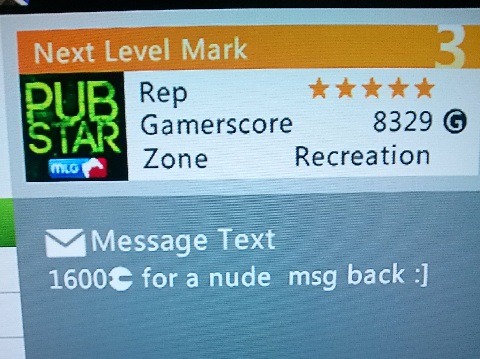
According to Lofgren, woman make up approximately 41% of gamers, with more female gamers under the age of 18 than males (Lofgren 2017). However, to offset the type of online abuse women can be exposed to, some will only play online as long as they are disguised as male characters and will purposely avoid games that require headsets and real time conversation (OHallaran 2017).
Flemming Seay states that whilst, “Online gaming enables self-exploration and discovery yet some fear that virtual communities detract from social activity and involvement in the real world, replacing real social relationships with less robust online substitutes” (Flemming Seay 2006). The addictive nature of online gaming comes into question when people are checking out of reality and checking into fantasy with this year, the World Health Organisation (WHO) listing ‘gaming disorder’ as an official mental health condition (Foster 2018). However, there is a theory known as ‘Self Determination Theory’ which suggests that human behaviour is driven by the need for competence, autonomy, and relatedness. If those needs are met, we enjoy activities more, even in gaming (Pang 2017). Perhaps that’s why 700 million people today are choosing to play games online.
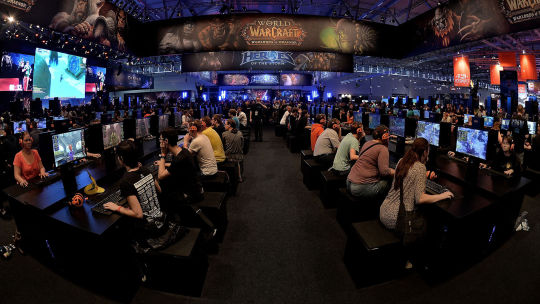
References
Flemming Seay, A, 2006, The Social and Psychological Impact of Online Gaming, Human Computer Interaction Institute School of Computer Science Carnegie Mellon University Pittsburgh, <http://www.biblioteken.fi/sites/default/files/content/Seay_Dissertation.pdf>.
Foster, A, 2018, Gaming Disorder to be an official mental health condition, news.com.au, Australia, <http://www.news.com.au/technology/home-entertainment/gaming/gaming-disorder-to-be-an-official-mental-health-condition/news-story/cdfeff5ae01fda47603ae6f22ad152e2>.
Lofgren, K, 2017, 2017 Video Game Trends and Statistics – Who’s Playing What and Why? , Trends and Statistics, Big Fish Games, <https://www.bigfishgames.com/blog/2017-video-game-trends-and-statistics-whos-playing-what-and-why/> .
Pang, C, 2017, Understanding Gamer Psychology: Why Do People Play Games? Sekg, <https://www.sekg.net/gamer-psychology-people-play-games/>.
Stuart, K, 2013, Gamer communities: the positive side, The Guardian – Australian Edition, <https://www.theguardian.com/technology/gamesblog/2013/jul/31/gamer-communities-positive-side-twitter>.
1 note
·
View note
Text
Blog #7 - Visual Communities & Social Imaging
“The Medium is the Message” is a famous quote by Marshall McLuhan, a noted and respected Media Theorist. In it, McLuhan is referring to the fact that it’s not always the ‘words’ that have the greatest impact on us but often the social and cultural changes that a new ‘medium’ brings (Federman 2004). In the context of digital media (as the medium), education, communication, business, finance and indeed community have all been revolutionised by the digital sphere.
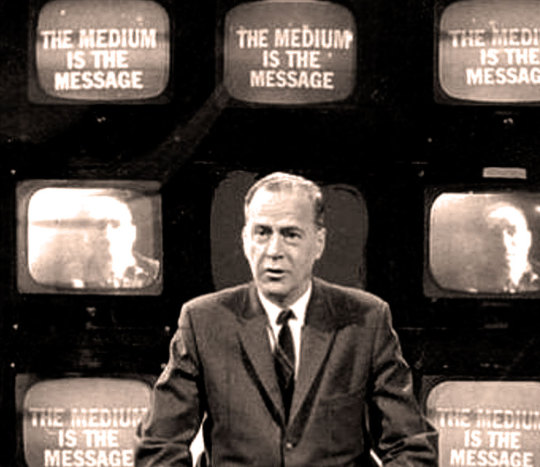
McLuhan believed that it’s not what we say as much as it’s ‘where’ we say it and social media platforms believe this as well with parameters that offer users a variety of options when it comes to expressing themselves. For example, Facebook offer subscribers a chance to build individualised networks through friend invites as well as offering users a chance to upload images. These images can be liked and also shared to other friend’s pages creating a wide net around the post. Mark Sweeney reports there will be approximately 700, 000 less user to Facebook than there was in 2017 and particularly in the case of teens (Sweeney 2018). This may be because teen users are more attracted to image based sites (visual content) like Instagram and Snapchat as opposed to sites with text as the main form of communication. Lang however claims it has more to do with the fact that Instagram and Snapchat are predominantly a younger persons ‘hang out’ and users are less likely to be followed by their mum’s and dad’s (Lang 2015).

Imagery in the form of photographs can be a dynamic yet intimate way to share experiences and thanks to technological advancement in small hand held devices like mobile phones, it’s easier than ever to share our experiences. Gone are the days that families would sit for family portraits with a professional photographer, today’s generation of amateur phone snappers are more likely to take a selfie with Granny….and teach her how to upload it to Snapchat (along with a filter!). Selfies have become a staple on social media sites and in a world that constantly changes who can blame the children of today for using the humble selfie as a means of controlling their world. Dr Apter from Cambridge University agrees claiming “It’s a kind of self-definition. We all like the idea of being sort of in control of our image and getting attention, being noticed, being part of the culture” (Sanghani 2014).
However, whilst this modern day phenomenon is a new and celebrated form of communication - used by politicians, celebrities and tweens alike, it has a dark side too. A recent study led by the University of Strathclyde suggests that young women spending time looking at selfies on social media can result in feelings of inadequacy around their own physical appearance. And it gets darker, still, with the introduction of ‘selfie-shaming’ where anonymous bullies hurl online abuse and insults at targeted victims.
I think I will let my final image speak for me!

References
Federman, M. (2004, July 23). What is the Meaning of the Medium is the Message? Retrieved <DATE> from http://individual.utoronto.ca/markfederman/article_mediumisthemessage.htm .
Lang, N, 2015, Why teens are leaving Facebook: It’s ‘meaningless’, The Washington Post, < https://www.washingtonpost.com/news/the-intersect/wp/2015/02/21/why-teens-are-leaving-facebook-its-meaningless/?noredirect=on&utm_term=.da648a864f2a>.
Sanghani, R, 2014, Why we really take selfies: the 'terrifying' reasons explained, The Telegraph, UK, <https://www.telegraph.co.uk/women/10760753/Why-we-really-take-selfies-the-terrifying-reasons-explained.html>.
Sweeney, M, 2018, Is Facebook for old people? Over-55s flock in as the young leave, The Guardian, Australian Edition, <https://www.theguardian.com/technology/2018/feb/12/is-facebook-for-old-people-over-55s-flock-in-as-the-young-leave>.
4 notes
·
View notes
Text
Blog #6 - Crowdsourcing in Times of Crisis
According to Ryan Goodrich from Business News Weekly, Crowdsourcing “ is to use a large group of people for their skills, ideas and participation to generate content or help facilitate the creation of content or products” (Goodrich 2013). Examples of crowdsourcing include Wikipedia and iStock, an image only site where photographer enthusiast can post their images to a networked world. The benefit of crowdsourcing from a business perspective is that it allows for a broad range of products with minimal overheads. For example, conventional employees require an employer to cover not just labour but extra expenses like holidays, sick leave or superannuation. Crowdsourcing eliminates this need creating a networked world of participants who contribute to the business at minimal expense.

Community collaboration on a large scale can create real change and is defined as ‘conscious crowdsourcing’. Massey describes it as “the practice of crowdsourcing to generate awareness of, action for, or solutions to pressing social and environmental challenges” (Massey 2017). Raising awareness and promoting advocacy is the underpinning of conscious crowdsourcing with issues from gender equality, racism and cyber bullying allowing individuals to get behind causes they are passionate about in the hope of creating positive and lasting change. A great example of conscious crowdsourcing is the #IceBucketChallenge which created an awareness around the progressive neurodegenerative disease ALS and generated $200 million to fund further research into its cure.

Crowdsourcing has also found its way into everyday services like open topographic datasets. For example, OpenStreetMap has over two million registered users and utilizes crowdsourced volunteers who contribute geographic information. The advantage of this type of service is that improvements to public conveniences, streets, landmarks etc, can be noted and changes made accordingly. The downside of this type of service however, is that it requires human intelligence, and not satellite imaging, to recognise problems with geographical features in order to report on the issue. Human participation is still very much required.
Crowdsourcing has the advantage of generating a large network of people in a fairly short period of time which can be advantageous in times of crisis. Crisis- mapping see’s users create geographical maps of areas that are under threat by sourcing information from social media platforms like Facebook or Twitter. The information is then sorted and mapped, getting re-distributed out to first responders, residents and the wider community. Crisis mapping only works however if information that is normally reserved for Governments and GIS experts is accessible to the wider public or ‘mappers’. In 2011 the city of New York created an open data portal that allowed its citizens to access pertinent geographic information of their area. Flood zones, designated shelter areas along with fire stations sites were made public knowledge in order that all information become transparent and accessible should a disaster arise (Greenburg 2013).

References
Goodrich, R, 2013, What is Crowdsourcing, Business News Daily, < https://www.businessnewsdaily.com/4025-what-is-crowdsourcing.html>.
Greenburg, B, 2013, Why is crisis-mapping so popular, Emergency Management, < http://www.govtech.com/em/disaster/Crisis-Mapping-Popular.html>.
Massey, P, 2017, The Reason we are all talking about Crowdsourcing, Weber Shandwick, < https://impact.webershandwick.com/the-reason-were-talking-about-conscious-crowdsourcing-e4da02a45b4d>.
1 note
·
View note
Text
Blog #5 - Trolling & Social Media Conflict
Social media has revolutionised how, when and why we communicate these days. Gone are the days when people put pen to paper, relying on the post to deliver their messages over the course of a few days, instead social media offers posters immediacy as well as diversity when it comes to the types of content they can post.
Today’s digital communicators use social media to broadcast their lives sharing photos, memes or thoughts with loved ones whilst others use social media as an advertising tool promoting their business or products through various platforms. The ease at which posts can be made along with instantaneous nature of social media, in general, make it a tool that can often be exploited by those using the platforms in a negative fashion. Trolling, cyber bullying and social media harassment are terms that have evolved through the misuse of social media and the reaction from those on the receiving end of this type of negativity can have catastrophic results. A recent victim of cyber bullying was fourteen year old Amy (Dolly) Everett who after serious and constant online harassment took her own life in January this year.

The term Troll or Trolling is a ‘post internet cultural phenomenon’ now used to describe the social torment one can inflict on another (Wilson, Fuller at al). Wilson, Fuller and McCrea state in their paper ‘troll theory’ that “The most essential part of trolling is convincing your victim that either a) truly believe in what you are saying, no matter how outrageous, or b) give your victim malicious instructions under the guise of help. Trolling requires deceiving; any trolling that doesn’t involve deceiving someone isn’t trolling at all.” This makes perpetrators of online mayhem hard to track down and prosecute as social media sites make it easy for anyone to create a false identity and post content – thereby deliberately deceiving their victim from the one set.
ACORN, Australian Cybercrime Online Reporting Network states “cyber-bullying or stalking occurs when someone engages in offensive, menacing or harassing behaviour through the use of technology” with examples including posting hurtful messages, photos or videos content. Perpetrators of cyber bulling can be fined up to $30,000 or spend 3 years in prison if found to be breaking the 1995 Criminal Code Act. Lane states that according to ACORN “the biggest category of complaints (almost 70 per cent) was to do with “nasty comments and/or serious name-calling”, followed by threats of violence (almost 30 per cent) and offensive or upsetting pictures or videos (just over 20 per cent) and that complaints made by children increased to 44 per cent in 2016-17” (Lane 2018).

References
Lane, B, 2018, As ‘Dolly’ Everett’s suicide shows, cyber-bullying can be deadly, The Australian, <https://www.theaustralian.com.au/news/inquirer/as-dolly-everetts-suicide-shows-cyberbullying-can-be-deadly/news-story/0a7b4282a486440b3a18206eea35af81>.
Wilson, J, Fuller, G, McCrea, C, Troll Theory, The Fibrculture Journal, DIGITAL MEDIA + NETWORKS + TRANSDISCIPLINARY CRITIQUE, Issue 1449 – 1443, <http://twentytwo.fibreculturejournal.org/>
A.C.O.R.N https://www.acorn.gov.au/learn-about-cybercrime/cyber-bullying
3 notes
·
View notes
Text
Blog 4 (1B)
Activism and Protest
Traditionally a form of protest usually resulted in a physical action with people gathering, united, and taking a stand on a matter close to their hearts. Today activism and protests look a little different thanks to social media because everyone has the opportunity to post, follow and participate in contemporary issues. With the introduction of social media so came the citizen journalists – defined as modern day digital contributors, citizen journalist are everyday people interested in uploading content outside of main stream media. No longer passive viewers these contributors are active in social and political affairs. NYU Professor Jay Rosen describes citizen journalism when “The people formerly known as the audience employ the press tools they have in their possession to inform one another, that’s citizen journalism” (Rosen 2008)
New media has opened a gateway to self-expression and collaboration and offers everyone an opportunity to become a global citizen. For those engaged in activism and protest platform like YouTube, Facebook and Twitter offer contributors an inexpensive way to draw attention to their cause as well as creating large communities that can network together (Lievrouw 2011). A great example of a social activist using new media to build awareness is Mahmood Nasser Al-Yousif. Mahmood is considered a Bahraini blogger (the Blogfather) and political activist whose social media posts (Mahmood has 11.2 K Twitter followers) are simply “an Arab man's attempt to bridge the cultural gap” (Mahmood 2018). In 2006 Mahmood launched a Freedom of Speech campaign against the Bahraini government which resulted in his arrest. It was only when Washington stepped in that he was released without charge. What Mahmood is seeking to do is “attempt to build a non-sectarian Bahraini based on citizens’ rights rather than religious affiliations” and is raising awareness by using social media platforms to do it (Khosrokhava 2016).
Hacktivism is a form of modern day activism that involves breaking into or hacking computer files and is generally socially or politically motivated. In 1997 the first Chinese ‘Hackers’ emerged calling themselves the Green Amy and managed to collect approximately 3000 followers. In 2001 the Green Army were instrumental in hacking American departments creating popups of the Chinese flag to protest the death of a young Chinese fighter pilot that collided (although protestors believed he was attacked) with an American plane that was patrolling in the same air space. The hackers created such havoc and disruption that the Chinese government intervened worried that the hacking incident could undermine the two nation’s tumultuous relationship (Maurer 2018).
Today’s social media participants not only engage with others from a social perspective but also from a civic one as well – using new media as a device to illicit change.
References
Khosrokhava, F, 2016, New Arab Revolutions That Shook the World, Routledge, New York, <https://books.google.com.au/books?id=ZQRZCwAAQBAJ&pg=PT286&lpg=PT286&dq=JUST+BAHRAINI+Campaign+launched+in+2006&source=bl&ots=pBBvH0tF9v&sig=RYugSs5ZXuxv8Ol06aQYxFZ7oTg&hl=en&sa=X&ved=0ahUKEwieq-CG7szaAhVEU7wKHQjEBCMQ6AEILDAB#v=onepage&q=JUST%20BAHRAINI%20Campaign%20launched%20in%202006&f=false>.
Mahmoods Den, 2018, <http://mahmood.tv/about/>.
Maurer, T, 2018, Cyber Mercenaries The State, Hackers and Power, Cambridge University Press, United Kingdom, <https://books.google.com.au/books?id=zqhJDwAAQBAJ&pg=PA108&lpg=PA108&dq=hacktivism+chinese+pilot+death&source=bl&ots=eznFf8l1-p&sig=yh2NfKoKpNgcwtcZoGzUoQV15IA&hl=en&sa=X&ved=0ahUKEwiX65yuss3aAhUGv7wKHSuVDfoQ6AEIVzAI#v=onepage&q=hacktivism%20chinese%20pilot%20death&f=false>.
Rosen, J, 2008, Press Think, Ghost of Democracy in the Media Machine, Accessed April 20 2018 <http://archive.pressthink.org/2008/07/14/a_most_useful_d.html>.
0 notes
Text
Blog #3
Blog 3
Politics and Civic Cultures
Whilst the introduction of social media has brought connection and community into our immediate worlds it has also been used is the political arena as a tool to reach millions of potential voters. From Twitter to YouTube and Facebook, today’s Politicians and their entourage freely use social media as a communication device because it offers them an opportunity to reach a broad and diverse demographic (Carter 2017).
Their posts, tweets or videos are used to reinforce their party’s policy, causes or campaigns to a mass audience and also allows for that audience to give immediate feedback.
Example A – Julie Bishop MP Facebook Page - https://www.facebook.com/JBishopMP/


Social media is exactly that, it’s social and it offers users an opportunity to engage in online conversations as often or as little as they like and Fran is a great example of using social media by way of “voluntary association” (Lichterman 2012). Sadly, not many politicians really use social media in the way that the average everyday Australian does. We use it to stay in touch and communicate with others by responding to their posts. It’s a two way process but Politicians are yet to get on board with this and many simply use it as a means to broadcast their activity leaving their audience disengaged and unsatisfied.
Some studies suggest that social media can have either a positive or a negative effect on one’s political career due to how they use it. One train of thought is that social media may benefit or even enhance democracy because through dialogue it allows “transparency and accountability” creating dynamic and cohesive change (Khazaeli and Stockemer 2013). Other thoughts suggests that social media in terms of the political area can lead to radicalization and anarchy when not used with more care (Ceron 2017).
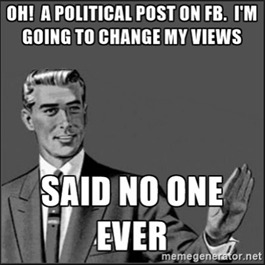
Barack Obama has been a great advocate for using social media to reach his audience during his 2007 – 2008 campaign. Claiming to be a “geek and “ tech nerd” Obama embraced social media knowing full well that in order to reach a younger demographic he would need to speak to them on their level. He did the same again during his successful 2011 campaign even creating his own #Obama2012 reaching millions of Twitter followers (McComb-Gray 2017). But, Obama is mindful of the infiniteness of the Internet and that it is the responsibility of the poster as to what gets posted and by who (Jericho 2012). NXT (Nick Xenophon Team) Senator Skye Kakoschke-Moore has recently found herself in the hot seat over some images of her taken in 2009. The young senator was holidaying in Vegas where pictures were taken of here posing inappropriately with a celebrity wax figure in a museum (http://www.adelaidenow.com.au/rendezview/will-politicians-ever-get-social-media-right/news-story/b07250f8b7483a4d3027c75c92783dae). The photos were then uploaded on her Fathers Facebook page and found their way into the Press (Langerberg 2017). Now, whilst the pictures haven’t had any lasting effect on the young Senator career (oh….except they lost the last election!) perhaps we should all be more mindful regarding the appropriateness of our posts.
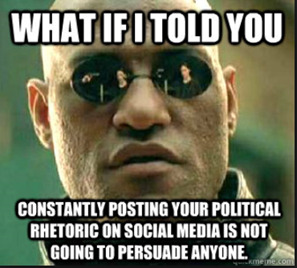
References
Carter, L 2017. Politicians & social media. Municipal World, 127(10), 3-4,41. Retrieved from https://search-proquest-com.ezproxy.lib.swin.edu.au/docview/1946946792?accountid=14205
Ceron, A, 2017. Social Media and Political Accountability: Bridging the Gap between Citizens and Politicians, Springer International Publishing.
Jericho, G 2012, 'How many votes are there on Twitter?', in The Rise of the Fifth Estate, Scribe, Victoria, Australia.
Khazaeli, S, Stockermer, D, 2013, The Internet: A new route to good governance, International Political Science Review, Accesed on April 14 2018, < http://journals.sagepub.com/doi/abs/10.1177/0192512113494728>.
Langerberg, A 2017, NXT Senator Skye Kakoschke-Moore pictured groping waxwork figure in Las Vegas, The Advertiser, Accessed April 14 2018, <http://www.adelaidenow.com.au/news/south-australia/nxt-senator-skye-kakoschkemoore-pictured-groping-waxwork-figure-in-las-vegas/news-story/83f18f0d4eccb249ebb2392383f70f2b>.
Lichterman, P, 2012, Reinventing the Concept of Civic Culture, Online Print June 2017, 2012, viewed April 14 2018. <http://www.oxfordhandbooks.com/view/10.1093/oxfordhb/9780195377767.001.0001/oxfordhb-9780195377767-e-8>.
McComb-Gray, D, 2017, Social media on the campaign trail: how Obama and Trump got the upper hand, ContentGroup, Viewed April 14 2018, <
https://contentgroup.com.au/2017/09/social-media-campaign-trail-obama-trump-got-upper-hand/
>.
Images
Julie Bishop, Facebook, Accesses April 16 2018 < https://www.facebook.com/JBishopMP>.
What if I told you [image], Memegenerator, Accessed April 16 < http://www.quickmeme.com/meme/3qp9qw>.
The Trouble with Mass Debating [image], Gareth Hill, Accessed April 16 2018, < http://www.garethjhill.com/the-trouble-with-mass-debating-on-social-media/>.
�=
3 notes
·
View notes
Text
Great post! Social Media is defiantly an interesting animal that's for sure. I have found that living abroad also helped keep my connection with people back home alive and vice versa when I returned. However, I am a little old school and even now still squeal with delight when I receive a post card or letter in the mail. I’m a little less excited about receiving a ping on my phone. Thanks for a wonderful post! Blessings :)
Blog Post 1

14 notes
·
View notes
Text
Fantastic Sarah! It’s funny - I wonder if people are really ‘present’ and in the moment anymore? It seems to me that those special and intimate moments are no longer so special once they are shared en masse and I think that the ‘pressure to share’ will be the next mental health epidemic! Perhaps we are all in need of a media fast? Blessings Sarah and thanks for your contribution :)
Social what and how!? Blog 1A
My task for this blog is to answer the question ‘how are our social experiences bound up with the social media platforms and their affordances, and how we make use of them?’
Social media is what we all participate in either mildly, or as a “heavy media user” (Young 2010,p.203) being signed up to the latest trend simply because so and so is doing it. If you too do not sign up you feel left out and not #ontrend. This is how the dominos fall and the rise of new #socialmediatrends eventuate; peer pressure participation. For the most part age has no limitations to being an active social media user, even celebs children have their own Facebook accounts. And grandma, well, all the grandkids are online and they will not communicate any other way. The illusion here is that if you are not online then you are invisible. #Socialmediatrends are no longer becoming trends, they become “distinct…tools of social self-formation.” (Wilken 2014, p. 295)
To find out the latest trend predictions for 2018 click on the YouTube link.
https://www.youtube.com/watch?v=ddYmOMNZ3P0
How though do we as a society determine the affordance of social media? It is all about what social media can do for us individually and as a whole. To gauge the value and emphasis we put on affordances we must break through the barriers of what the creator of the social media technology expects from its use. The end user, you and I, then emerge more skilled in the usage of their platform. This equates to our personal affordance. Addicted to original features while also untethering additional features the more we interact.
The typical hand in device, heads down is becoming common place. I go to my daughters activities and the parents are not watching their child, instead they are glued to their devices. Yes I #surf however I choose to be present and online minimally, synchronously. Affordances in this example suggest that “engaging with social media” (Jericho 2013, p.254) platforms are far more exciting than being present in the moment with our child at their activity. Is this a good affordance or a bad one? Bad if you stay online not engaging, good if you can negotiate balance.
Click on the link for another perspective.
https://academic.oup.com/jcmc/article/19/1/38/4067499#94894212
I will close with the following #meme and a few questions.

(Imgflip 2016)
What do you think of this statement?
Do you #agree or #disagree? And why?
My response – Social media is the go-to place for up-to-date news. Traditional media is losing its power as people can now upload to social media “due to…its instant accessibility,” (Murthy 2013, p.2) rather than wait for the six o’clock news. The affordance to this sort of social media interaction is #priceless.
And my definition of social is just that, mine!
Cheers,
Sarah

REFERENCES
‘Social Media’ [image], in Imgflip 2016, Coffee Talk Lady, SNL, Funny Memes, Social Media, Imgflip viewed 8 April 2018, <https://imgflip.com/i/172csp
Impulse Digital 2018, Social Media Trends 2018, 16 January, viewed 6 April 2018, <https://www.youtube.com/watch?v=ddYmOMNZ3P0
Jericho, G 2012, ‘How many votes are there on Twitter?’, in The Rise of the Fifth Estate, Scribe, Victoria, Australia.
Ann Majchrzak, Samer Faraj, Gerald C. Kane, Bijan Azad; The Contradictory Influence of Social Media Affordances on Online Communal Knowledge Sharing, Journal of Computer-Mediated Communication, Volume 19, Issue 1, 1 October 2013, Pages 38–55,
Murthy, D 2013, Twitter: Social Communication in the Twitter Age, Polity, Cambridge.
Wilken, R & McCosker, A 2014, 'Social Selves’, in Cunningham & Turnbull (eds), The Media & Communications in Australia, Allen and Unwin pp. 291-295.
Young, S 2010, 'News, political reporting and the internet’, in How Australia Decides, Cambridge University Press, Victoria, Australia.
12 notes
·
View notes
Text
Blog #2 - Social Media and Affordances
In this blog I will be considering the question “how are our social experiences bound up with social media platforms and affordances and how we make use of them’…so here goes.
Today social media is a gateway for broad communication across a range of topics and across multiple platforms. According to David Cowling, Australia had 15, 000, 000 active users on Facebook for the month of January and 15,000, 000 visitors to YouTube (Cowling 2018). Now, both of these platforms offer similar experiences for the users with opportunities to share content, like content and leave feedback however they vary slightly in that YouTube is video based and offers the user an opportunity to view content in a ‘real-time way’. From personal experience this type of engagement is not only entertaining (#funnycats) but also has become my go to platform when learning something new https://www.youtube.com/watch?v=_CMHixb0KSI. Similarly, I use Pinterest the same way although the affordances they offer me are slightly different as this platform is mostly image based with links attached that will re-direct me to (more often than not) an advertisements or to a blog. The affordance of this and other platforms are complex as they are not just used as communication devices but also as a sales tool and for data generation.
For me my social experiences ARE bound up with social media platforms and affordances and here is how. Technologically speaking, I like, share, respond, read reviews, gather data and create content to share with others - thing’s I never did before the introduction of social media to my world. I follow communities on Facebook that are remote from my own and I won’t visit a restaurant or make a large scale purchase without reading a review first. I don’t have to remember different passwords to different platforms as I can almost always login to a new platform through my Facebook account (#happy). From a social perspective, I like many others, nowadays connect with friends at public events that are created on Facebook, a platform that will even allow me to buy the tickets there as well (a great affordance when you’re time-poor!).
Norman suggests an affordance is “the design aspect of an object that suggest how the object should be used” and as far as social media is concerned I recognise that I am an end-user but also a contributor who relies on social media as a multidimensional tool. I got to wonder though, am I really using social media or is social media using me?
References
Bucher, T, Helmond, A, 2017, The Affordances of Social Media Platforms, In The SAGE Handbook of Social Media, edited by Jean Burgess, Thomas Poell, and Alice Marwick. London and New York: SAGE Publications Ltd.
Cowling, D, Social Media Statistics Australia, January 2018, https://www.socialmedianews.com.au/social-media-statistics-australia-january-2018/, Accessed April 13 2018
Norman, DA, 1999, Affordance, conventions, and design. Interactions, vol. 6, no.3, pp. 38-42.
dpriority51 \l
1 note
·
View note
Text
Blog 1
Social Media.....to engage or not to engage?
On my quest to understand the in’s and out’s and complexity around social media I thought I would go right back to basics (I’m talking IBM 5150 guys!) and get a better understanding of exactly what the word social means. Now, if you were to type it into your web browser you will get words like, community, gathering, party and collective. Put simply, it’s a group, and in terms of social media these groups are formed via digital platforms that are a Segway to a new kind of community.
Now, once upon a time a social platform was a soap box on a street corner but today they are viewed in terms of the digital realm where groups gather, connected through a web host allowing for “peripheral connection” and conversation on almost any and every topic (Mandiberg 2012 p. 73). Today we have Facebook, Twitter, Instagram, Snapchat, Flickr, Pinterest and Tumblr just to name a few and I myself can admit to hours spent on many platforms in my quest for information or even a shared opinion. I like it. I like the social connection that I have with friends and family and I like the minimum effort that I need to put in to maintain these relationships. Hey, call me lazy but in this fast and often frenzied world we live in (thanks industrial revolution!) most of us are time poor and I’m no exception so I can appreciate that New Media has shaped how I communicate with others. But honestly to me, it’s just a new way to socialise. For example, I use Facebook to stay connected with others but very rarely do I leave a comment. I’m just not that invested in “little Johnnie” using the toilet for the first time or the copious amounts of memes shared reminding me to “just breathe and let it go” (as opposed to holding your breathe and……..what?). No, I won’t leave a comment regarding little Johnnie’s efforts but I will give the little champ a ‘thumbs up’ and here’s why. Community according to Siapera is a choice we make to engage with others out of a sense of instinctive will (Siapera 2012 p. 193). We need to connect with others, to be a part of something and to be involved because it makes us feel valued and included.
For me Facebook offered me this opportunity and even allowed me to choose the community I wanted to be involved in. By issuing friend requests I was allowed to freely build the community I wanted allowing people into my world that were like me and shared similar values and interests. Alternately by following others I could be a part of theirs viewing their Timelines freely.
Siapera suggests that digital communities create weaker ties between members when compared to physical communities and from my limited experience I tend to agree (Siapera 2012 p. 194). But ultimately, the choice to engage or not to engage in social media is mine to make and it’s also why little Johnnie will only get a thumbs up.
Bibliography
Mandiberg, Michael, 2012, The Social Media Reader, NYU, New York, 2012.
Siapera, Eugenia, 2012, Understanding New Media, SAGE, London, 2012
3 notes
·
View notes